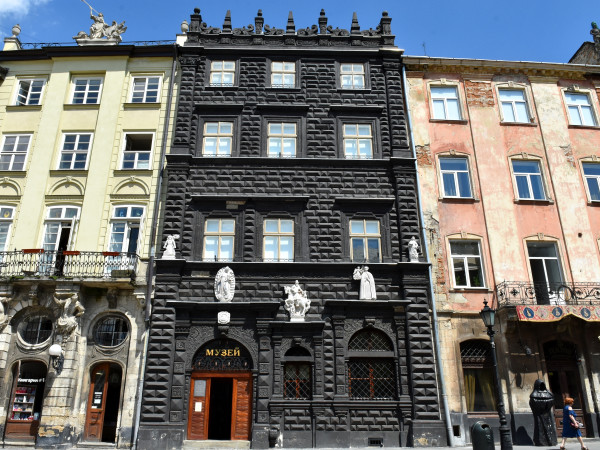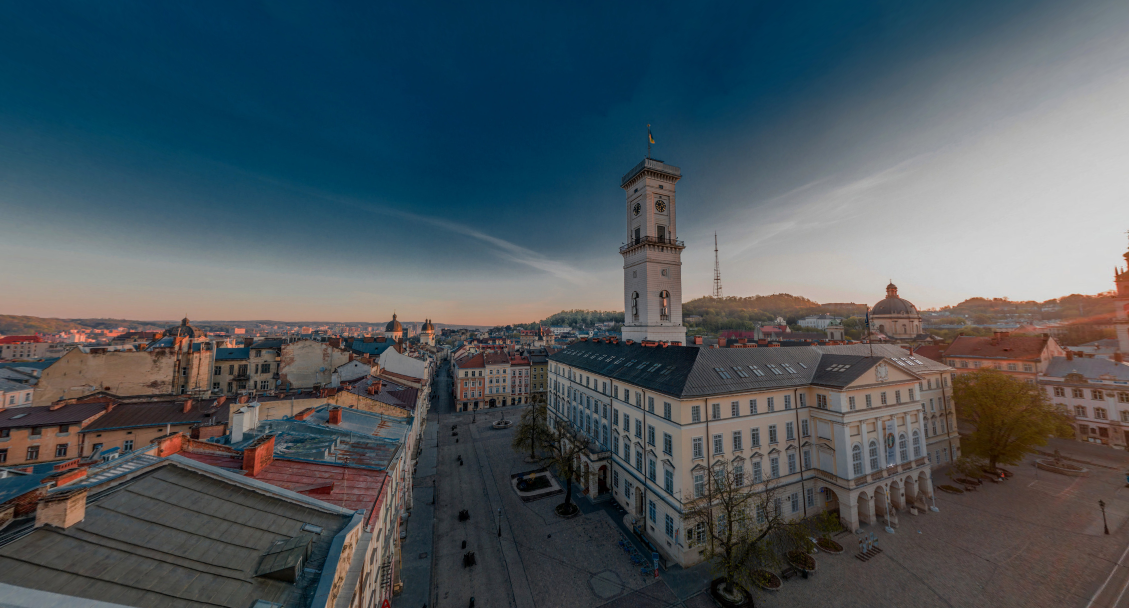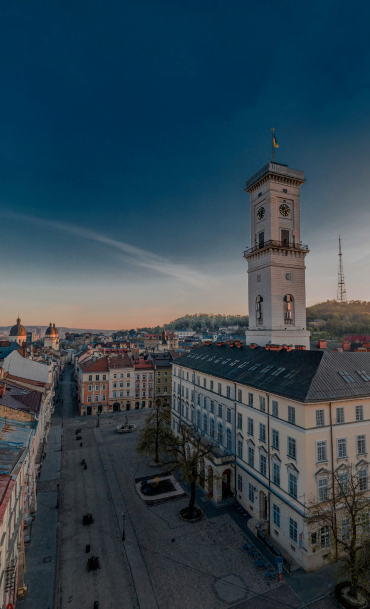Fountains
Rynok Square during its existence has been the social and economic center of Lviv. The forty-three houses of different styles and historical periods are located on the perimeter, and in the center, there is Lviv City Hall also called “Ratusha” (1, Rynok Sq.).
Although nowadays trade on the Square mostly consists of restaurants and souvenir shops, 100 years ago merchants and shopkeepers were selling their goods there, and a few centuries before it the merchants had been arriving from different parts of the well-known world. Opposite the four corners of the main municipal building, there are 4 fountains with statues of ancient gods: Adonis, Diana, Neptune, and Amphitrite. Water from the fountains has long been used to refresh products sold on the market.
Gothic period on the Rynok Square
In the 12th - 13th centuries, the medieval cities of modern Ukraine’s territory received the Magdeburg right for the first time. That was an important privilege granted by the monarch of the state to a city located within the state’s boundaries. The privilege established the right to self-government. So, the magistrates (modern city councils) were created to deal with such cases of internal city policy. Usually, there was a market space nearby the city council in the form of a large covered area and space for trade. It was exactly Lviv of the 14th-century-case with the place where the Rynok Square is situated today. Previously, the trade was taking place in “the Princely city” located on the territory of the nowadays Old Rynok Square.
Rynok Square was one of the first places covered with cobblestones. Bartolomei Zimorovych noted in his work “Triple Lviv” in the 17th century the next thing: “The Square and the main streets have been already paved in 1452”.
Half-timbered houses, located on 4 sides of the Square, served as workshops and shops. The first floors were mostly commercial. Each house could not be wider than three windows under the "English tax" of Magdeburg law. This standard provided the shopkeepers with equal trade as well as burghers with certain democracy. Except for the stone beerhouse and the first floor, other floors and structures were based on a wooden frame. The city suffered numerous fires, the biggest one took place in 1527 when most of the houses and buildings were burnt down. On the other hand, it gave impetus to the forced modernization of the city and the Rynok Square, in particular.

Renaissance on the Rynok Square
During the following decades, new houses, the architecture of which mostly includes the Renaissance style, were built around the City Hall. The main building of the city (1, Rynok Square) remained the same, but 90 years later a new tower was built on the initiative of Martin Campian. Restoration and reconstruction of the houses as well as adapting the style to the local manner were done by Italian architects. Italians, Greeks, Ukrainians, Poles, and Germans were the first owners of these houses.
Examples of such architecture are the Black Townhouse, Palazzo Bandinelli, and the Kornyakt Palace.
Baroque period of the Rynok Square
The new style affected the architectural trends of the 17th-18th centuries. Notable examples of Baroque architecture are the Lubomyrski Palace, the Ubaldini, and Kiliyashchynska townhouses.
Ratusha and the Classicism on the Square
After the Austrian administration establishment in Lviv, the city changed its appearance. The city walls and fortifications were dismantled, and the style of classicism, empire, and later, modernism, began to appear in the features of city buildings. In 1827, a new Lviv City Hall was built on Rynok Square. In particular, some houses were rebuilt in a new "government" style, modest compared to others in the background. An eminent example is building № 29, which is also recognizable as the entrance to the Andreolli Passage.
Today, Lviv’s Rynok Square is a popular place for public gatherings and important celebrations.




